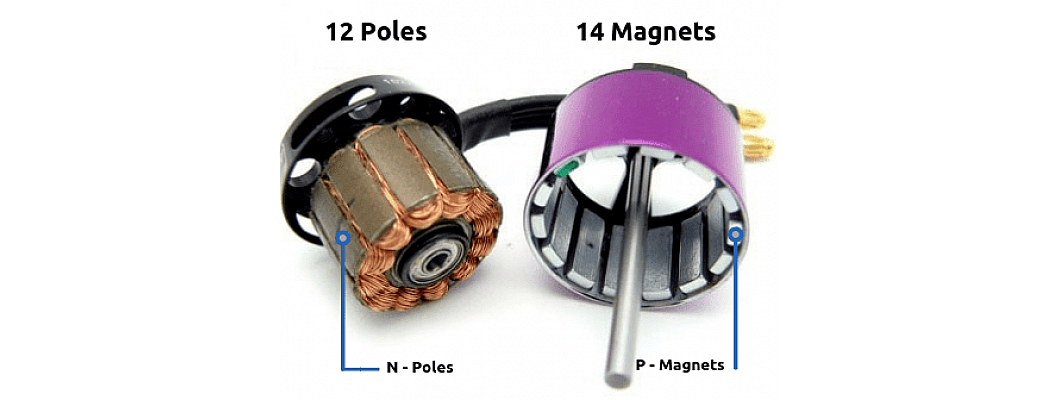
In this article, we are going to learn about the criteria under which the selection of motor happens for drone.
Drones have become a very interesting and fascinating topic these days. With the advancements in the battery technology and the motors and materials of drone chassis, it has become very common topic these days.
With the relaxation of the new drone laws in India, more and more people are going to buy drones in the future. But with such advancements, it important to have some knowledge about things like propeller selection and motors selection.
- Firstly, you need to have an estimate about the weight of the drone. To do that, you must calculate the weight of all components.
- After calculating the weight, one must determine the frame size so as to select the proper propeller size.
- Now according to the weight and the size of the propeller, we can calculate the lifting thrust and the speed of the drone. There are more important factors which decide the selection of the motors.
Thrust-Weight Ratio
- This is one of the most vital factors in deciding the speed of the drone. For a safe drone flight, you must ensure that the thrust to weight ratio is more than 50 percent. If the ratio is lesser than 50%, the motor will not respond to the commands well. Your drone must remain stable even in windy conditions. With higher thrust to weight ratio, the drone will have great agility and higher speeds. But with greater agility and speed, the control of the drone will be tough as well.
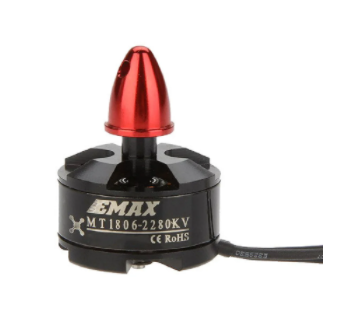
- For instance, if the total weight of your drone is 1kg, the minimum lifting thrust should be 2 kgs when the motors give a 100% output. This gives out a thrust to weight ratio of 2:1.
- For racing drones, this ratio needs to be much higher than normal drones. The thrust to weight ratio recommended is 5:1.
- If you need to fly the drone slowly and need it stabilized for shooting, then the recommended ratio is 3:1 or 4:1.
KV Ratings
- This is another vital parameter which is used to decide the motor selection. KV Rating means the rpm of motor gives as the output per volt.
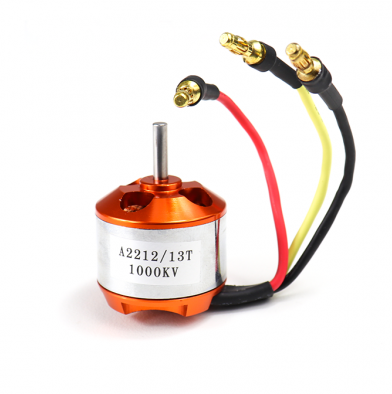
- For example, if the motor you choose has a rating of 1000KV and the Lipo battery supplies 12V. Then the speed of motor is 12000 rpm. After mounting the propeller, the speed of the motor will decrease due to air resistance.
- Higher KV motors rotate at higher speeds and thus draw in more current. Large sized propellers are used with small KV rating motors.
- And small propellers are used with high KV rating motors are they require less torque and thus require less current.
- If large propellers are used with high KV motors, then it will require more torque and thus will draw up more current. This will lead to overheating of motors.
Motor Dimensions
- The brushless motor of drones are generally categorized by a 4-digit number. The first two number represents the diameter of the stator. The last two digits represent the stator height.
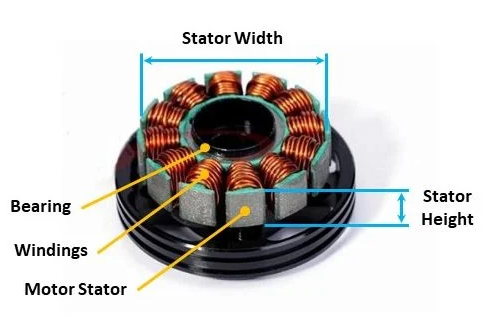
- Taller stator means more power at high RPM.
- Wider stator means more power at low RPM.
- What kind of motor being used actually depends on the size of the frame.
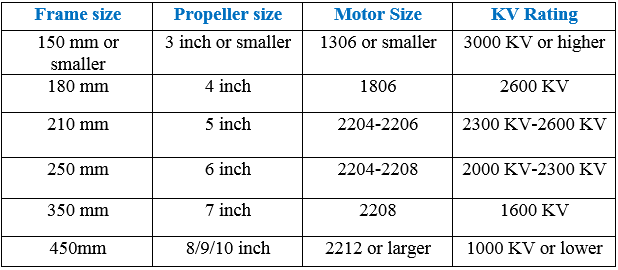
P and N magnets
- Brushless DC motor contain N and P type of magnets inside them which generate the rotation of the motor. They contain specification such as 12N14P. The number before N states the number of electromagnets in the stator and the number before P refers to the number of permanent magnets in the casing.
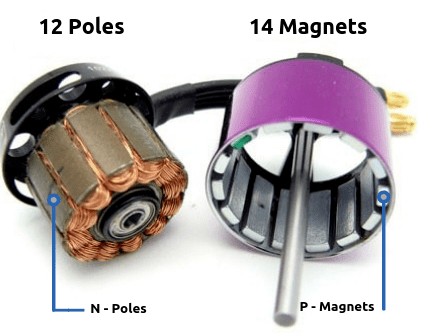
Voltage and current draw
- The battery is another key component of the drone. The voltage of the battery suggests how much current it will draw. We need to calculate how much thrust a motor produces in order to understand how much current it will draw. More thrust means higher voltage and higher current. According to the current draw and the size of the propeller, we can choose the appropriate ESC.
Motor movements
- If all the motors rotate in the same direction, then the drone is very tough to stabilize during flight. The drone will lose its agility and thus would not be as responsive as you would want it to be.
- For smoother flight, it is recommended that one use a pair of motors which move clockwise and counterclockwise direction.
- Some of the combinations for different frame types and motor rotations are given below.
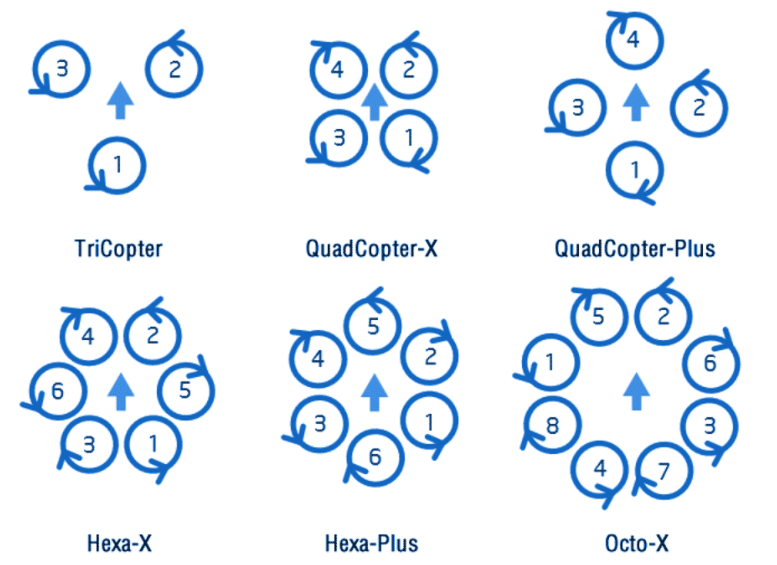
For instance, in quadcopters, you will have to install two motors in clockwise direction and other two motors in counterclockwise direction.


Leave a Comment